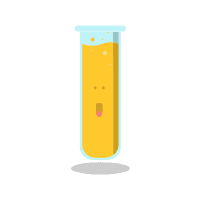
Topic: 8.5 Matter and Energy (1)
Quiz by Grade 8 Science - Texas Education Agency
Grade 8
Science (2010) (Archived)
Texas Essential Knowledge and Skills (TEKS)
Feel free to use or edit a copy
includes Teacher and Student dashboards
Measures 6 skills from
Measures 6 skills from
Track each student's skills and progress in your Mastery dashboards
With a free account, teachers can
- edit the questions
- save a copy for later
- start a class game
- automatically assign follow-up activities based on students’ scores
- assign as homework
- share a link with colleagues
- print as a bubble sheet
25 questions
Show answers
- Q1A researcher wants to experiment with an element that reacts like phosphorus (P) but has a greater atomic mass. Which element should the researcher select for the experiment?Silicon (Si)Arsenic (As)Sulfur (S)Nitrogen (N)60s8.5.C: Matter and Energy
- Q2A model of an atom is shown below. An atom of which element is represented by this model?Sodium (Na)Neon (Ne)Carbon (C)Boron (B)60s8.5.B: Matter and Energy
- Q3Which of the following best describes an electron?It has a positive charge and much more mass than a neutron.It has a negative charge and about the same mass as a neutron.It has a negative charge and much less mass than a proton.It has no charge and about the same mass as a proton.60s8.5.A: Matter and Energy
- Q460s8.5.E: Matter and Energy
- Q5Which information could a student determine from only the chemical formula of a protein?The number of atoms of each element in the proteinThe physical arrangement of atoms in the structure of the proteinThe color of the proteinThe number of molecules in each sequence that makes up a protein60s8.5.D: Matter and Energy
- Q6A teacher asks a student to write the chemical equation for photosynthesis. The student’s response is shown below. The equation is not balanced correctly. Which of these is a balanced equation for photosynthesis?#texas/42f49aba-ff70-48a8-84e8-a30523320ff9/C.png#texas/42f49aba-ff70-48a8-84e8-a30523320ff9/D.png#texas/42f49aba-ff70-48a8-84e8-a30523320ff9/A.png#texas/42f49aba-ff70-48a8-84e8-a30523320ff9/B.png60s8.5.F: Matter and Energy
- Q7When trying to identify an unknown element, a scientist determines what other elements the unknown element reacts with chemically. Which property of the unknown element determines the other elements it reacts with?The total number of particles in the nucleus of the unknown elementThe number of protons in the nucleus of the unknown elementThe total number of neutrons in the unknown elementThe number of valence electrons in the unknown element60s8.5.B: Matter and Energy
- Q8The model of the periodic table below shows the locations of four elements. A student is asked to identify an element that is a pale-yellow brittle solid and does not conduct electricity. At which location in this periodic table would the element most likely be found?234160s8.5.C: Matter and Energy
- Q9An atom has 25 protons, 30 neutrons, and 25 electrons. What is the charge of the atom’s nucleus?30−2525−3060s8.5.A: Matter and Energy
- Q10Users enter free textType an Answer60s8.5.D: Matter and Energy
- Q11During an investigation, a student combined the two clear, colorless solutions shown below. The student observed that the temperature changed from 25°C to 23°C when the solutions were combined and that a white substance rapidly formed and settled to the bottom of the container. What most likely happened to produce these results?Some of the water froze into ice crystalsThe solutions reacted chemically.One of the original compounds came out of solutionRapid evaporation of water occurred, leaving a solid.60s8.5.E: Matter and Energy
- Q12Coal contains carbon and other elements. Carbon dioxide forms when coal burns in the presence of oxygen. Which of these is the best evidence that a chemical reaction occurs when coal burns?The shape of the coal changes.Oxygen is present.A new substance is produced.Coal is made up of more than one element.60s8.5.E: Matter and Energy
- Q13The atoms of a certain element each contain 11 protons and 1 valence electron. Which statement correctly identifies this element and describes its chemical reactivity?The element is sodium, and it is not very reactive.The element is sodium, and it is highly reactive.The element is fluorine, and it is not very reactive.The element is fluorine, and it is highly reactive60s8.5.B: Matter and Energy
- Q14An atom of a certain element has 36 protons, 36 electrons, and a mass number of 84. At room temperature this element is a very stable gas. How many neutrons are in this atom? Be sure to use the correct place value.Users enter free textType an Answer60s8.5.A: Matter and Energy
- Q1560s8.5.F: Matter and Energy